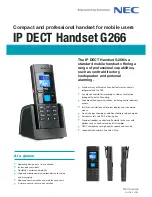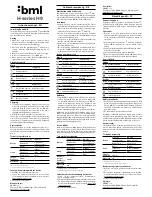
Description
Parameter
If set to yes, unit includes c=0.0.0.0 syntax in SDP
when sending a SIP re-INVITE to the peer to hold the
call. If set to no, unit will not include the c=0.0.0.0
syntax in the SDP. The unit will always include
a=sendonly syntax in the SDP in either case.
Default: Yes
RFC 2543 Call Hold
If set to yes, the phone uses a different random call-ID
for registration after the next software reboot. If set
to no, the Cisco IP phone tries to use the same call-ID
for registration after the next software reboot. The
Cisco IP phone always uses a new random Call-ID
for registration after a power-cycle, regardless of this
setting.
Default: No.
Random REG CID on Reboot
Specifies the lowest TCP port number that can be used
for SIP sessions.
Default: 5060
SIP TCP Port Min
Specifies the highest TCP port number that can be
used for SIP sessions.
Default: 5080
SIP TCP Port Max
Provides the option to take the caller ID from
PAID-RPID-FROM, PAID-FROM,
RPID-PAID-FROM, RPID-FROM, or FROM header.
Default: PAID-RPID-FROM
Caller ID Header
Controls whether to hold call leg with transfer target
before sending REFER to the transferee when
initiating a fully-attended call transfer (where the
transfer target has answered).
Default: No
Hold Target Before Refer
When enabled and the Notify message body is too big
causing fragmentation, the Notify message xml dialog
is simplified; Session Description Protocol (SDP) is
not included in the dialog xml content.
Dialog SDP Enable
If set to yes, it configures the phone to immediately
handle NOTIFY sipfrag messages.
Keep Referee When Refer Failed
Display the Diversion info included in SIP message
on LCD or not.
Display Diversion Info
Cisco IP Phone 7800 Series Multiplatform Phones Administration Guide
234
Cisco IP Phone Troubleshooting
SIP Parameters
















































